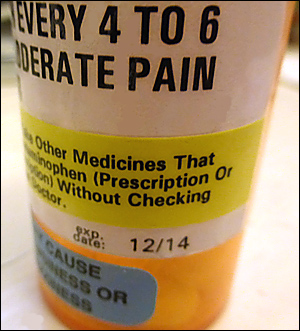The pharmaceutical company Zogenix is set to release Zohydro ER, which will be the most powerful narcotic painkiller on the market, some time this month. Meanwhile, critics of the Food and Drug Administration (FDA) are railing against the decision to approve this opioid medication, claiming it will create an even greater epidemic of abuse and addiction.
Why is Zohydro Considered Dangerous?
- It’s the only approved extended release painkiller containing solely hydrocodone
- It’s 5 to 10 times stronger than any other available opioid painkiller
- It will be available in doses as high as 50 milligrams
- It is intended for patients with severe chronic pain
- It comes without tamper proof technology, meaning it’s easily crushed and can be consumed in non-medical ways like snorting or injecting
“It’s a whopping dose of hydrocodone packed in an easy to crush capsule,” says the president of Physicians For Responsible Opioid Prescribing, Dr. Andrew Kolodny. “It will kill people as soon as it’s released.”
The uproar over this new prescription painkiller comes with some interesting details…
First, based on growing concerns and statistics regarding the abuse of prescription painkillers, the FDA rescheduled hydrocodone-based opioid drugs like Oxycontin and Vicodin as Schedule II narcotics last year.
Then one day later, to the dismay of many, the FDA went against the recommendation of its own advisory committee, which voted 12 to 2 against approving Zohydro ER.
Will Zohydro cause more opioid abuse problems?
Zogenix has said it will focus its efforts with Zohydro on a small group of doctors who are experienced in helping patients cope with chronic pain. This way, they believe only patients who truly need the drug will get it. However, some experts like Dr. Stephen Anderson, an emergency room physician in Washington, believe this is just a marketing ploy.
“It costs a lot of money bringing a drug through clinical trials and then bringing it to market,” says Anderson “You have to anticipate (the drug company) being able to market and getting it’s money back.”
The Centers For Disease Control and Prevention has reported that fatal overdoses due to prescription painkillers have quadrupled since 1999. Another estimate reports that in 2012 there were approximately 335,000 opiate users in the country, which is double the amount in 2005.
Supporters of the new extended-release painkiller, though, point to the nearly 600,000 people in the U.S. who die from cancer each year, many of whom experience incredible pain. They argue that controlling access to drugs has never been a successful solution to solving addiction. Recent evidence of this is the increase in heroin use across the country when it became harder to obtain opiate-based prescription painkillers.
“I firmly believe that the benefits of this product outweigh its risks,” says Bob Rappaport, a director at the FDA. “Many patients in the U.S. suffer from untreated or poorly treated chronic pain. Further limiting access to potential treatments is not the answer when new treatments are critically needed.”
FDA rules prohibit Zogenix from marketing Zohydro in any fashion, except for “the management of pain severe enough to require daily, around-the-clock, long term opioid treatment and for which alternate treatment options are inadequate.” Ultimately, though, doctors are can prescribe the medication to any patient they feel requires it.
Whether or not Zohydro will be as abused as OxyContin remains to be seen, but state attorneys general from 29 states petitioned the FDA to reverse its decision on Zohydro. A month before that, congress requested that the FDA review its ruling on the prescription painkiller as well.





